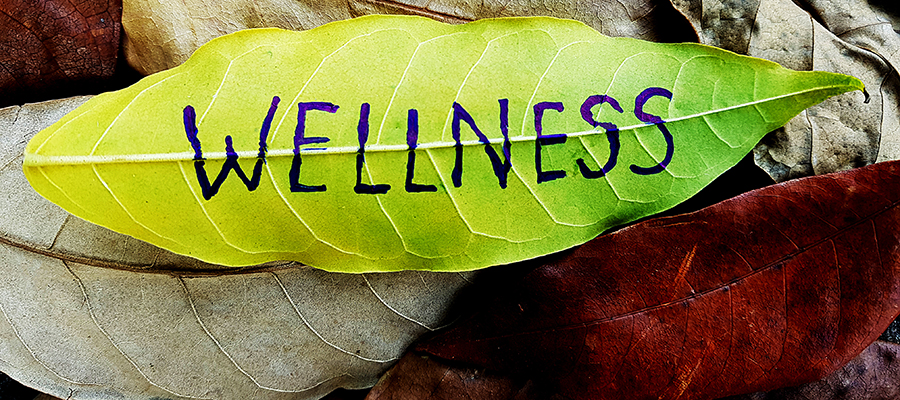
Nature can positively affect employees. There is evidence that time spent outdoors boosts peoples’ well-being, and even five minutes of time in nature can improve mental health (Sandborn, 2018). Additionally, time in nature has been shown to improve short-term memory, provide inspiration, decrease stress levels, boost positivity, and increase mindfulness and concentration (University of Michigan, 2008). Spending time outside benefits people because breathing fresh air increases oxygen intake and allows the lungs to work at their full capacity (Sandborn, 2018). Exposure to vitamin D from the sun boosts peoples’ moods, too. Time outside also can reduce employees’ chronic stress, physical and social stressors. These benefits are at their strongest when experiencing 21 to 30 minutes of nature time, but after an hour in nature, employees’ attention spans improve by 20% (Hunter, Gillespie, & Chen, 2019; University of Michigan, 2008).
Additionally, socializing in nature, whether it be taking walks outside with coworkers, having lunch outside, or socializing with friends, can lead to feelings of belonging and community, shared values, and positive relationships with others (Hartig et al., 2014; Rios et al., 2011). Social cohesion is linked to improved mental health and wellbeing, as well as lower mortality rates among older individuals, and socializing in green outdoors areas lead to more cohesion (Rios et al., 2011; Sugiyama, 2008).
From the Wellbeing at Work Conference
A Nature Boost: Forest Bathing
with Maureen Stine, a Certified Forest Therapy Guide
 Practical Example
Practical Example
Practicing mindfulness in nature can be quite simple. Employees can notice breathing patterns while on a walk, or any number of other ways of connecting with their mind and the nature around them. Specifically, sitting outside and paying attention only to what one’s senses experience is easily done. Simply find a comfortable spot to sit outside and spend some time focusing on one sense before moving on to the next, such as listening to the rustling of the trees or the birds, then focusing on the different smells in nature, then moving onto the next sense until each of the senses have been grounded and are connected to nature.
 At a Glance
At a Glance
- Time outdoors improves physical and mental health, short-term memory, provides inspiration, decreases stress levels, boosts positivity, and increases mindfulness and concentration
- Being in nature reduces stress, with the strongest benefit occurring when between 21 and 30 minutes are spent outdoors
- After an hour in nature, one’s attention span increases by 20%
- Time outside increases social interaction, gets more oxygen into the blood, and increases vitamin D levels
- Socializing in nature can lead to feelings of belonging and community, shared values, and positive relationships with others, with increased social cohesion from greener spaces
How to be mindful in nature (Pace, 2017):
- Walk outside and notice your steps on the ground
- Sit outside and notice your breath
- Sit outside and notice the sounds of nature around you
- Notice the colors, shapes, and smells of the nature around you
- Notice your movements as you do an outdoor activity like walking, running, kayaking, biking, gardening, or another activity
 MSU In Action
MSU In Action
MSU’s campus aids with incorporating nature into employees’ workdays since it has been recognized as a 2019 Tree Campus USA by the Arbor Day Foundation (Schrader, 2020). This recognition shows MSU incorporates nature and trees into its community, which allows employees to step into nature and reap its benefits.
Ideas to implement nature into the workplace could include outdoor staff meetings, retreats, walking meetings around campus, or group lunch meetings outdoors, like by Beaumont Tower or in the Judith DeLapa Perennial Garden. Walk along the reflexology path outside the Bott Nursing building and have employees focus on the textures underneath their feet or watch a bird, squirrel, or the water moving for a few minutes along the river trail.
 References
References
Hartig, T., Mitchell, R., de Vries, S., & Frumkin, H. (2014). Nature and health. Annual Review of Public Health, 35, 207-228. https://doi-org.proxy2.cl.msu.edu/10.1146/annurev-publhealth-032013-182443
Hunter, M. R., Gillespie, B. W., & Chen, S. (2019). Urban nature experiences reduce stress in the context of daily life based on salivary biomarkers. Frontiers in Psychology. https://doi.org/10.3389/fpsyg.2019.00722
Pace, K. (2017, April 13). Nature provides many lessons that connect to our mindfulness practice. Michigan State University Extension. https://www.canr.msu.edu/news/nature_provides_many_lessons_that_connect_to_our_mindfulness_practice
Rios, R., Aiken, L. S., & Zautra, A. J. (2011, October 26). Neighborhood Contexts and the Mediating Role of Neighborhood Social Cohesion on Health and Psychological Distress Among Hispanic and Non-Hispanic Residents. Annals of Behavioral Medicine, 43(1), 50–61. https://academic-oup-com.proxy2.cl.msu.edu/abm/article/43/1/50/4563936.
Sandborn, D. (2018, January 5). Nature in the winter is good for your mental health. Michigan State University Extension. https://www.canr.msu.edu/news/nature_is_good_for_your_mental_health
Schrader, N. (2020, January 31). MSU recognized as 2019 Tree Campus USA. Michigan State University Infrastructure Planning and Facilities. https://ipf.msu.edu/about/news/msu-recognized-2019-tree-campus-usa
Sugiyama, T., Leslie, E., Giles-Corti, B., & Owen, N. (2008, April 15). Associations of neighbourhood greenness with physical and mental health: do walking, social coherence and local social interactions explain the relationships? Journal of Epidemiology and Community Health, 62. https://jech-bmj-com.proxy2.cl.msu.edu/content/jech/62/5/e9.full.pdf.
University of Michigan. (2008, December 16). Going outside-even in the cold-improves memory, attention. University of Michigan News. https://news.umich.edu/going-outsideeven-in-the-coldimproves-memory-attention/.
